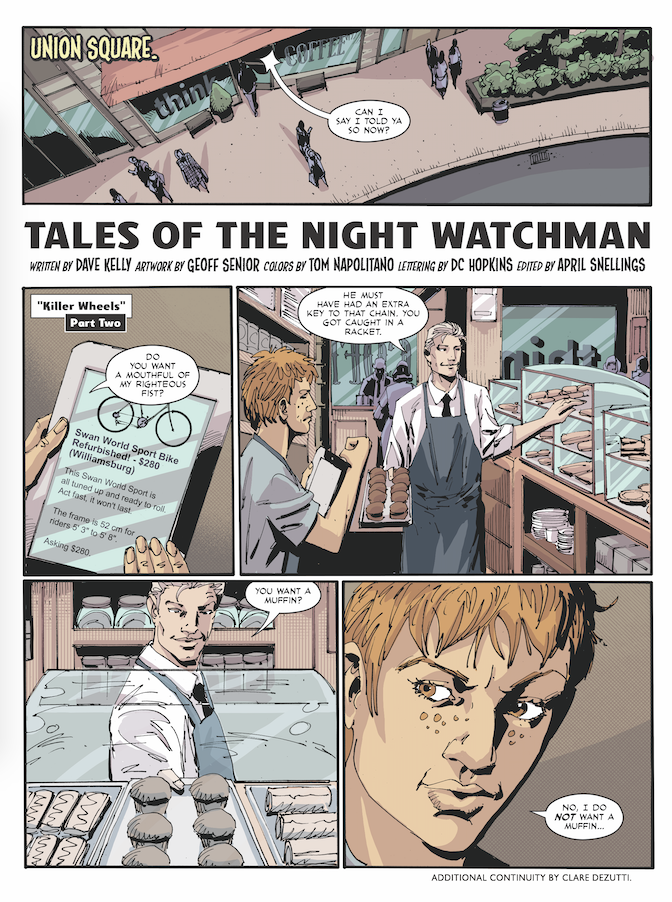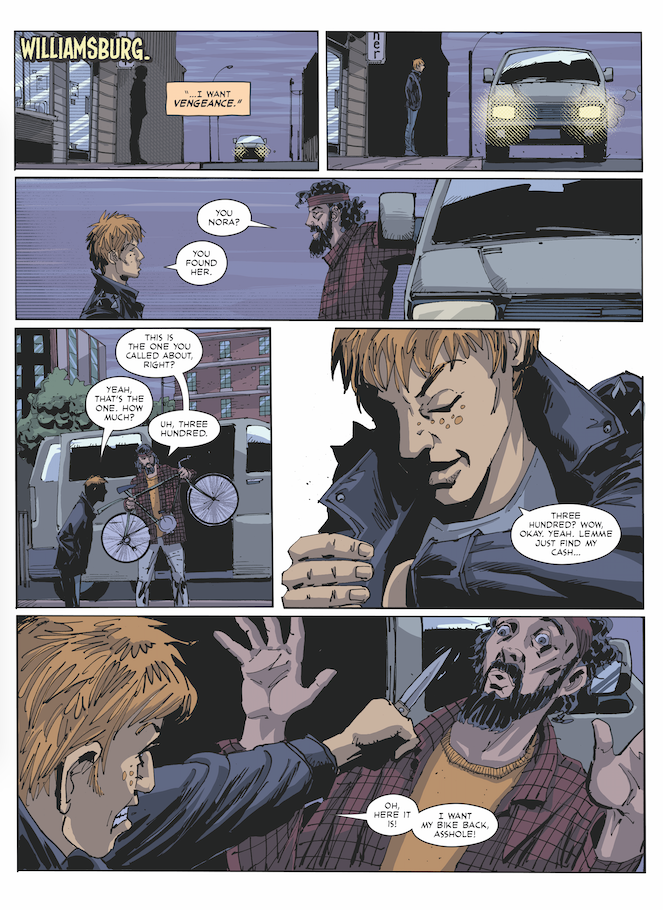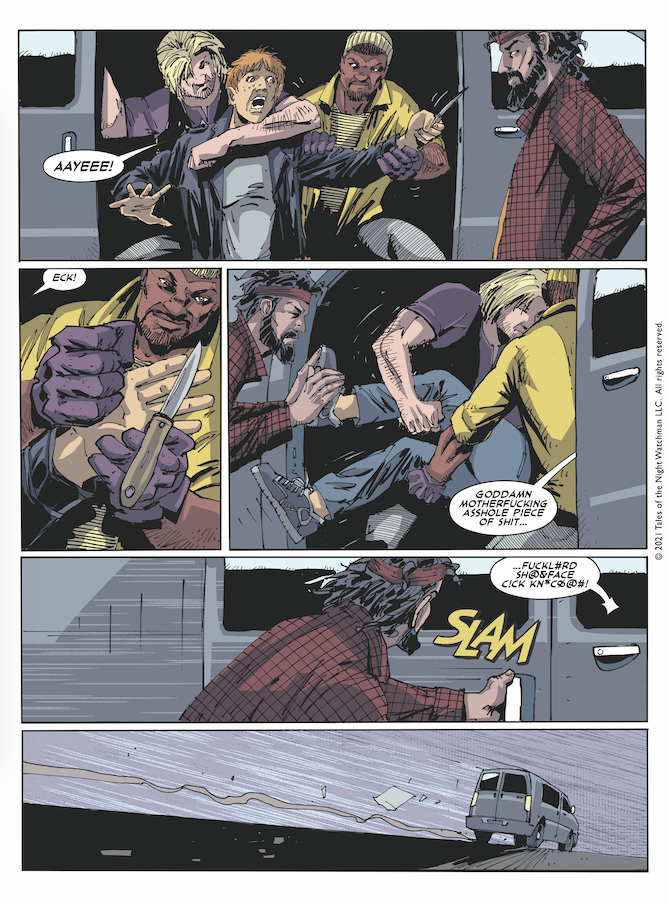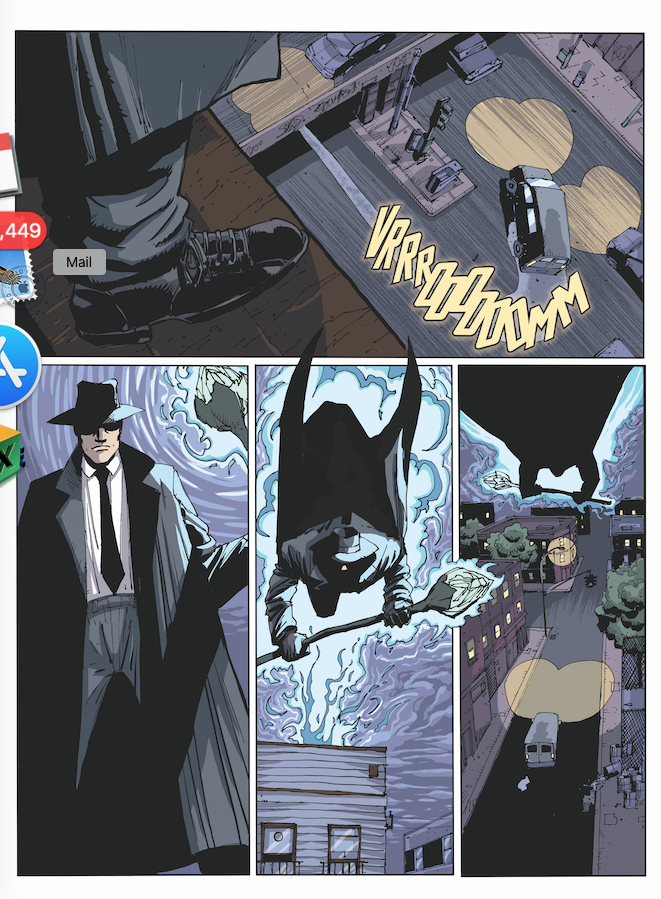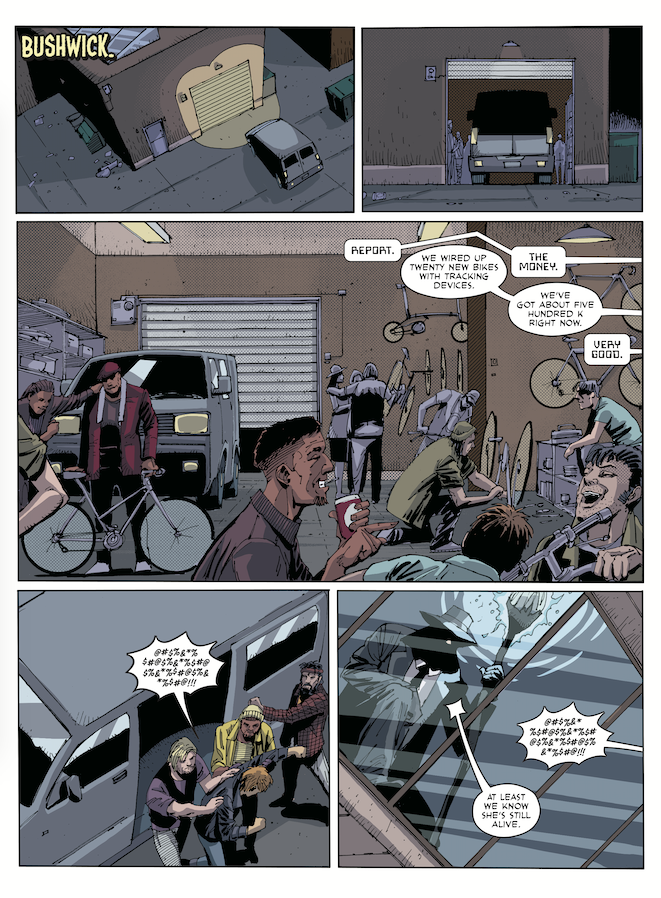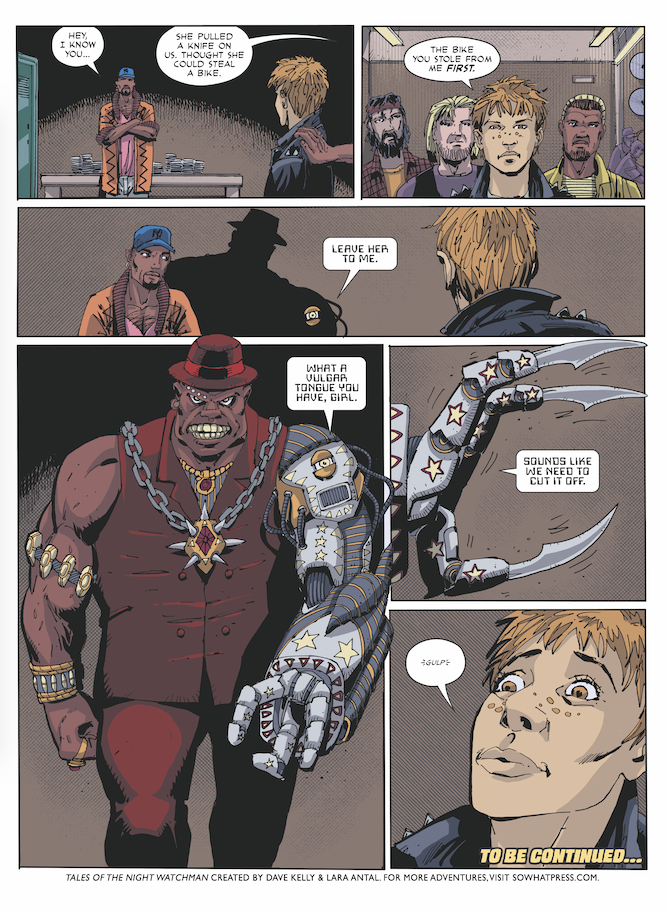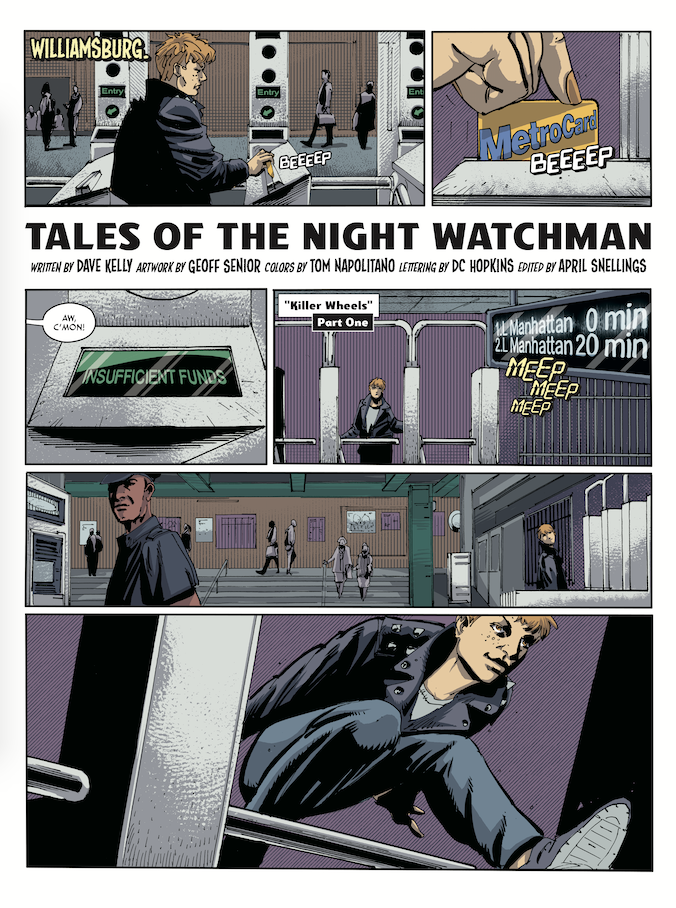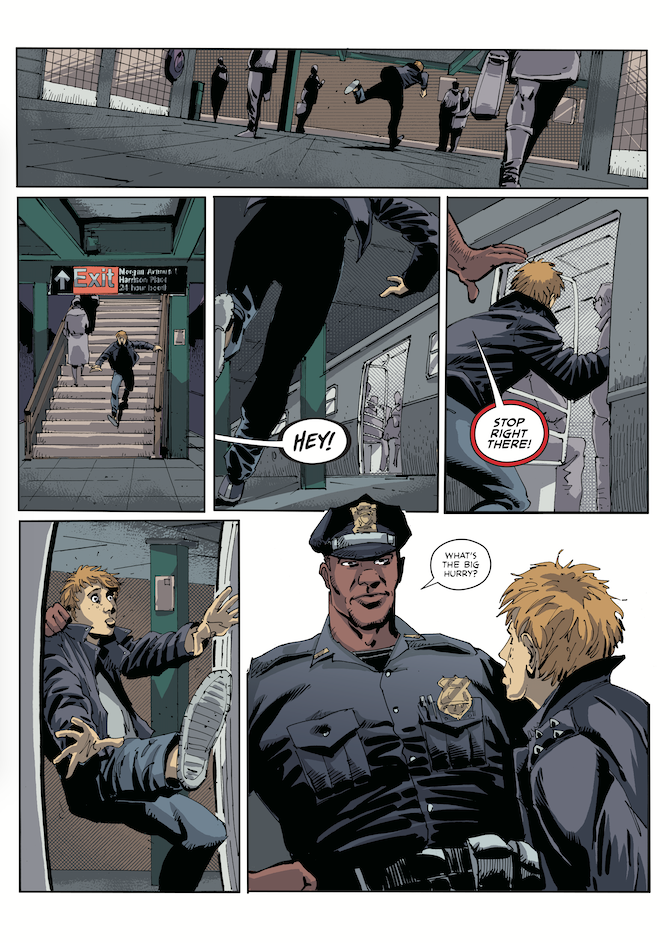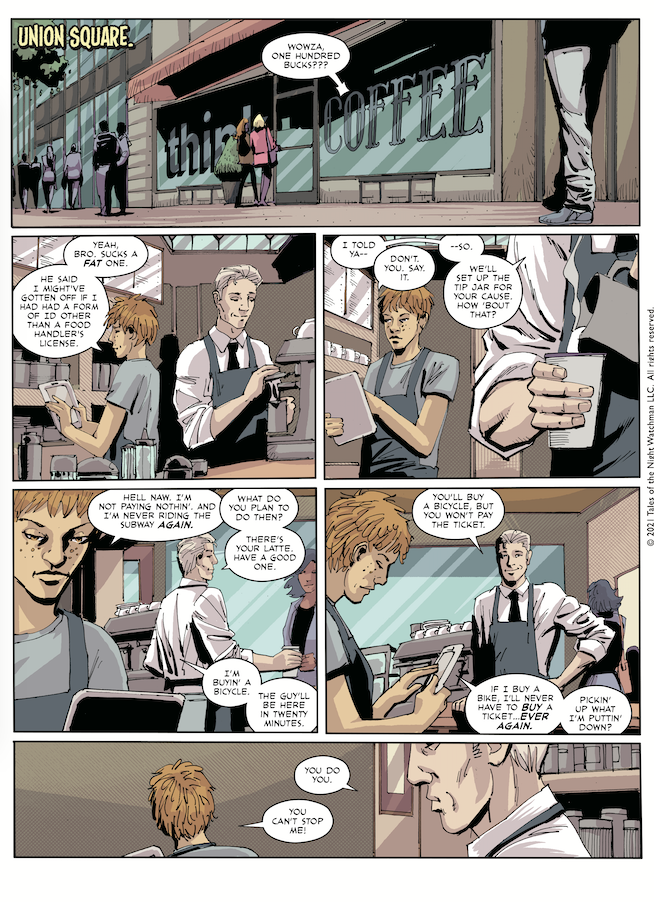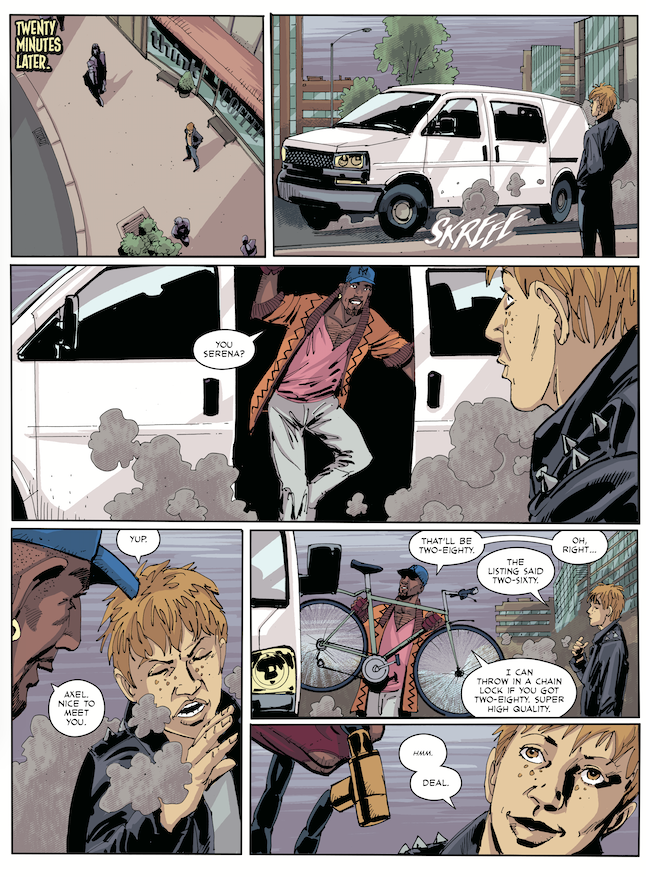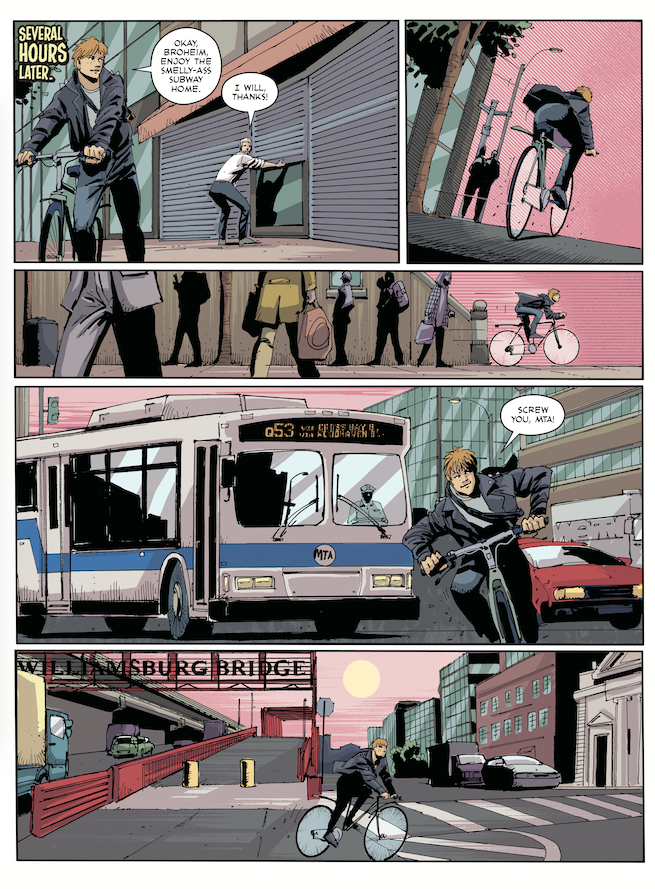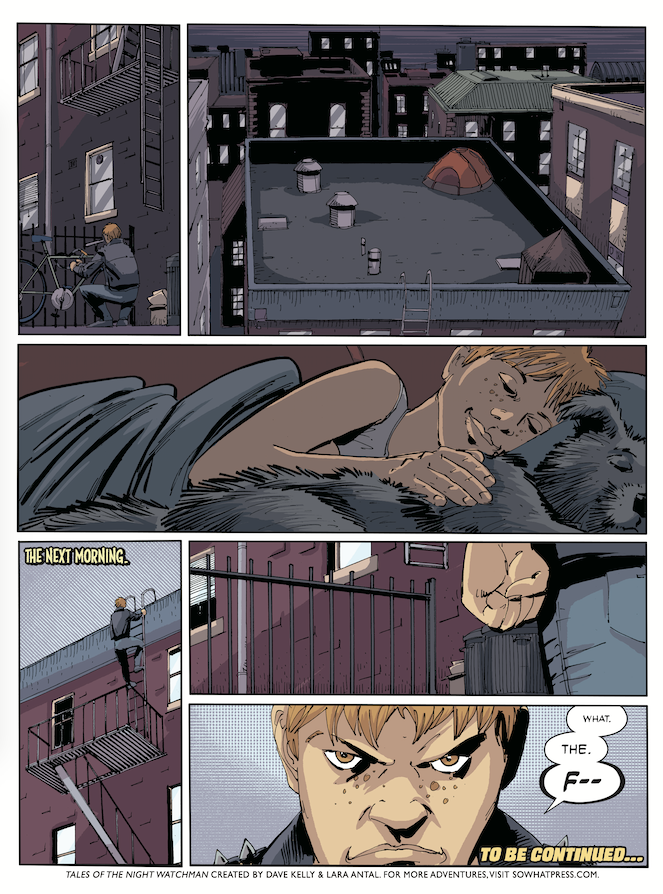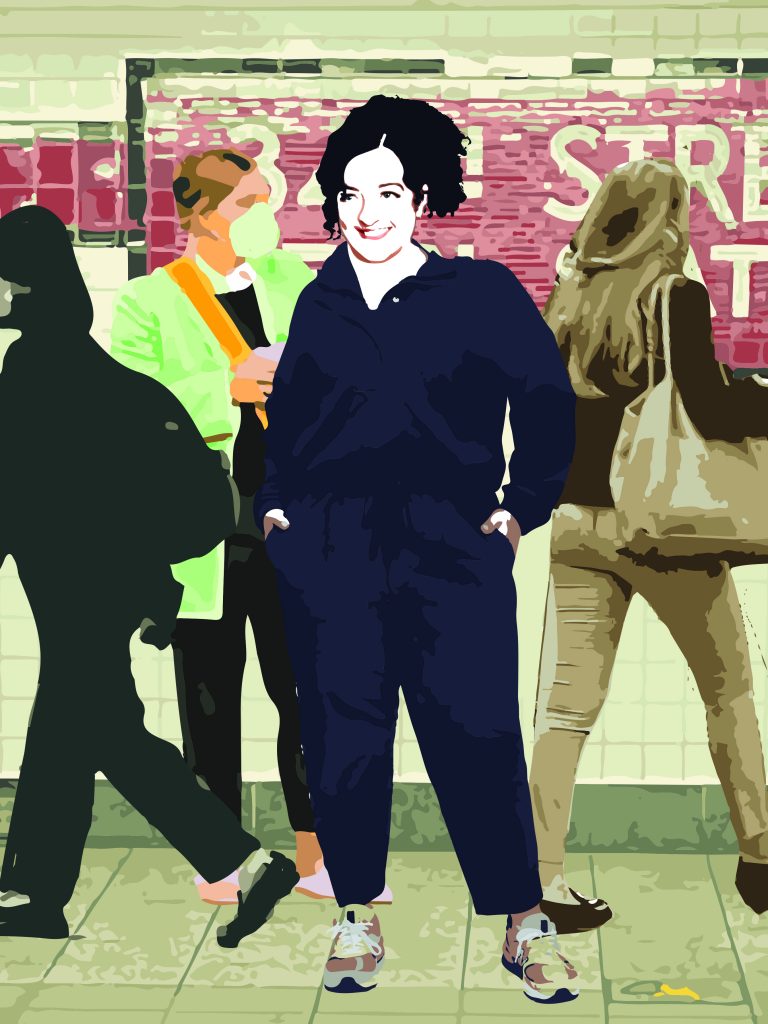
The Irish comedian and author of Maeve in America is back with a new collection of essays that examine the imperfections of her adopted country— while learning important lessons from the pandemic and showing love for everyone on this train.
In March 2020, shortly before New York City went into coronavirus lockdown, writer and comedian Maeve Higgins found herself at The Alamo wedged between myriads of Border Patrol Officers with buzz cuts and homemade rifles. In the following months of forced isolation, Maeve discovered that one, like every person in every part of the world, she wished the pandemic would end, and two, she hoped that the experience would not impart any lessons. The lonely days of too much solitude, a mishap with edibles, and the realization that relationships are important, led Maeve to write a collection of essays that reflect on Irish nostalgia, American exclusivity, widespread injustices, and the extraordinary circumstances that led to deep analysis of what it takes for one to survive in an adopted country. In her memoir, Tell Everyone on This Train I Love Them, Maeve examines the complexities of the present while looking to the past, and finding compassion for those with radically different worldviews. Maeve makes it her mission to accept New York City for what it is and to try to love everyone on this train.
In a phone call, Maeve Higgins and I discussed the creative process, controversial monuments, living in Park Slope on a freelance budget, and listening with compassion instead of judgment. Our conversation has been edited for length and clarity.
You are a writer, an actor, a performer, a comedian, a researcher — and a podcast co-host and panelist. You are an artist in just about every sense of the word. Your many different skillsets and art forms are fascinating to me. The creative process, in general, is always fascinating to me. I’m a writer and visual artist, but I tend to define myself as a visual artist before calling myself a writer. I am curious to learn how you define yourself, and how you have developed these many different creative skillsets. Is stand-up comedy how you began your career?
Yes, it was in stand-up comedy where I started my creative career. You get it because you also do all of these other forms of self-expression, like writing and visual arts. For me, it’s writing and comedy—like, performing on stage. It doesn’t feel unnatural; there wasn’t a moment where I stopped doing one to do the other. I kind of did them all simultaneously, or I suppose, in which medium best fit a specific idea. But technically, yes, comedy was the first thing I did. I’ve always had this compulsion to express myself, which took the form of stand-up, beginning in my 20s. With my writing, I’m gradually asking bigger questions and have more resources. With comedy, you can have a thought and then kind of spew it out that night— and then it’s done. Writing, for me, is a form of painting. If I’m really trying to figure out what I think about something, I write it down.
You describe personal reflections, in regard to your creative process, that struck me. Perhaps it’s because they felt familiar. For example, you discuss a period of conflict between theatre and film. You write that it became “impossible” for you to “suspend reality enough to enjoy any form of acting.” You continue the dialog to include the “politically fraught era” in which you were living at that time, and admit that you “ran out of time and tolerance for anything outside of the real.” Can you talk further about how political and/or real-life events can, at times, hinder motivation? Or pause the creative process entirely?
I think it’s interesting, too. I’ve talked to my friends who are writers and performers about this. I do think we have a responsibility to show up politically in the world, not as an observer but as an actual participant. It’s really important to stop and think about where we are and what we are doing and why we are doing it. And that can also be really difficult. If you’re going through personal things or collective things, like what we have been going through with a semi-authoritarian government—and pandemic and climate catastrophe—but you’re not really showing up, then you’re not actually taking it in. I think creativity has a really important place in figuring out the world.
“Situational Awareness” was one of my favorite essays. I was completely engulfed in this chapter and your experiences at the Border Security Expo. You write about the reflective interactions and conversations you had with others who encompassed fundamentally different ideologies than yours. These exchanges forced you to think about your own history as an Irish immigrant. Is there one encounter, in particular, that is the most memorable?
One event that stayed with me was a kind of social event at the Border Security Expo. I was there alone and attended a community gathering. There were retired Border Patrol Officers and current Border Patrol Officers— and that’s where they were also auctioning off handmade rifles. The moment that was interesting to me— remember, I was a woman there by myself, and an Irish immigrant one—was at a luncheon. I asked to join a group at this table, and they were so kind to me. They were completely welcoming. It was very human that they would be like— “oh, a stranger. Let’s make her comfortable.” And at the same time, I really disagreed with their work. I know that they dedicated themselves to stopping strangers in need of help, from getting the help they are entitled to— and yet, in person, face-to-face— they were so lovely, and we totally connected about tons of things. I think it is important that I put myself in these types of situations and not let it just be an intellectual exercise where I judge other people and read studies. It’s important to meet people and be there physically. I think that’s one of the times you’re asking about that’s memorable. These moments are not simple.
Throughout the book, you discuss your experiences as an Irish immigrant who found an “adopted” home in the United States. Your experiences as an immigrant, in some ways, are radically different from the experiences of others, such as migrants and refugees.
I am lucky because I’m allowed to have a different viewpoint. I am a guest in this country but a very welcomed one. I’m also white and European and documented. I get to have this perspective that is “outside” but also “inside”— and that’s really valuable for writing. I can start to blend in but at the same time, I have a different cultural experience. Every one of us has a different perspective and I believe that I am lucky to be able to write from mine.
Right. And you recently finished a graduate degree in International Migration Studies that allowed you to investigate the politics and power dynamics at the border. The heavy research component of this essay seems like it would influence the creative process. The essay is both autobiographical and journalistic.
At the end of 2019, I was writing so much about migration and continued taking on more assignments. I realized that I didn’t want to be a writer who “didn’t know enough.” I don’t know if you’d call it professionalism or imposter syndrome, but I felt like I was in no position to write about migration, so I decided to get a Master’s in Migration Studies. I am fascinated by the immigration system in the US and the country itself. In New York, one in three of us were not born in the US. I was glad to have access to brilliant minds and scholarly work that I could draw from and learn from.
You write about the profound experiences you’ve had with historical statues, including the Robert E. Lee monument and Kehinde Wiley’s “Rumors Of War”— a bronze statue depicting a young Black man on a rearing horse. These are both controversial monuments that, for a brief time, existed in the public sphere near one another. I saw “Rumors Of War” in Times Square, before it debuted in Richmond. As an artist, I’m always interested in hearing others describe profound moments they’ve had with works of visual art—and in this case, monumental works of art.
I didn’t see “Rumors Of War” when it was in Times Square although I wish I had. That sounds so cool because every inch of Times Square is so commodified. It would be interesting to see the statue there, and to ask, “who is Kehinde Wiley in this scenario?” He’s so celebrated. I saw “Rumors Of War” immediately after I saw the Robert E. Lee monument, about a mile away. The energy coming off the statues was so different. When I saw the Robert E. Lee monument it had been completely taken back by the Black community and the allies in Richmond. It was graffitied with a vegetable garden around it. There were also tributes to Black people who had been murdered by the police. It was stunning to me. The images illuminated with anyone who had even slightly been paying attention that summer. There were incredible visuals of images being projected onto the monument. Seeing the monument in person— and the size— and the fact that it really did dominate the city, really took me aback. That and reading all of the graffiti that encompassed it. It wasn’t just BLM and anti-police—it was also pro-migration. People were really using the monument to say the things that they had wanted to say for so long.
The energy surrounding “Rumors Of War” was different. Kehinde Wiley said that the statue is “in conversation” with all of the other monuments— which were all Confederate monuments. This statue was his response. He created a conversation that was painful and necessary, but that’s what it is— a conversation. It’s really nothing more frightening than a conversation. I had quite an emotional response to the monument.
In the essay, you brilliantly contextualize the meaning of the monuments and relate them to Ireland’s revolutionary history.
Yes. “Rumors Of War” immediately reminded me of the “Misneach” monument in Ireland, which I write about in the essay. I used to walk by monuments every day in Dublin, but it wasn’t until I saw “Rumors Of War” that I was able to connect these things. I’m not interested in being prescriptive but I did have the reaction of— “this is not the first time a country has had this conversation.” Americans are so insular. They don’t always understand that they can look to other places for answers. Understanding other nation-states can help conversations evolve.
The visuals of defaced and desecrated Confederate monuments are truly powerful. I often wonder if it’s more effective for cities to remove monuments, or to allow the public to take them back by way of graffiti or toppling. As you mentioned, people were making trips to the monuments to better understand our Nation’s complex history. You interviewed some of these folks.
Yes, I did. I wanted to know what the locals in Richmond felt was best, and of course, everyone has a different answer. That’s why these conversations are so important. It’s such a privilege to be a writer and to be upfront with people by asking questions to better learn.
The title of your book is inspired by the last words of a young man named Taliesin Namkai-Meche. Taliesin was murdered on a train in Portland while trying to protect two teenage girls from a violent hate crime. I am wondering if this is the first time you’ve written about death? I am also wondering if you felt connected to him while meditating on his words?
I haven’t written about death in any big way. When I heard his words, my reaction was shock. I was shocked by his heroism and by what he said. His words really stayed with me. I kept them with me and continued to use them as a guide. I didn’t really feel like I connected to him as a person as much as I connected to his words. Before this book was published, I spoke to his parents. He has such a public life and death. In the past few months, I have been looking more at his life— and that was why I wanted to publish a piece in The Guardian. I don’t claim any special relationship with him because I did not know him. All I know are his words and this one incredible action that he took that led to his death.
The title of the book is perfect because it echoes not only the compassion that Taliesin had, but themes of compassion throughout.
So many people took his words to heart. That story and tragedy— and seed of hope— was a big moment for all of us. The point of his words is that we are all connected.
Maeve Higgins is a contributing writer for The New York Times and the host of the podcast Maeve in America: Immigration IRL. She is a comedian who has performed all over the world, including her native Ireland. Now based in New York, she cohosts Neil deGrasse Tyson’s StarTalk, both the podcast and the TV show on National Geographic, and has also appeared on Comedy Central’s Inside Amy Schumer and on WNYC’s 2 Dope Queens.

